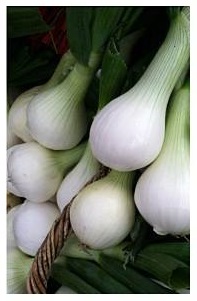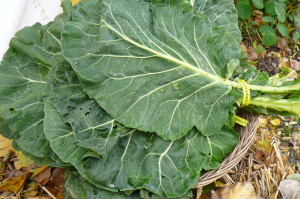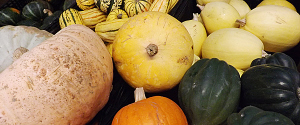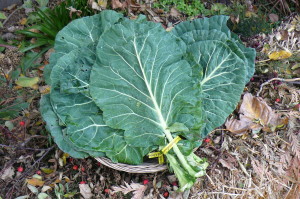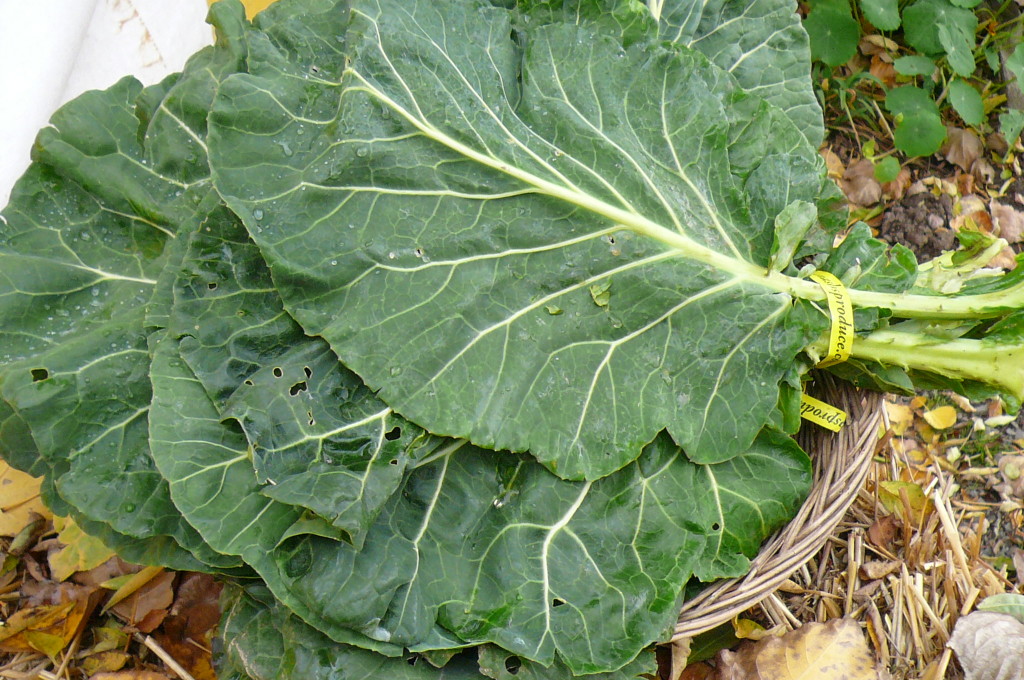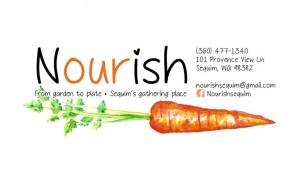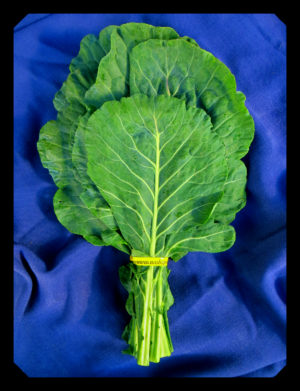
1 bunch fresh collards
1 tsp. olive oil
1 small white onion, chopped
2 garlic cloves, minced
1 smoked turkey wing or leg, or 1 tsp. liquid smoke, or 1 whole dried chipotle or ancho chili
1/2 tsp. salt
½ tsp. freshly ground black pepper
1.5 cups chicken or vegetable stock
1 Tbsp. cider vinegar (optional)
Remove stems from collards and wash leaves thoroughly. Stack leaves and cut across into about 1-inch sized ribbons.
In large pot over medium-high heat, add oil and onions. Saute until softened and translucent. Add garlic and saute quickly until golden and fragrant. Add turkey wing/liquid smoke/chili, stock, greens, salt and pepper and bring just to a boil. Reduce heat to low. Cover and simmer for 45 minutes, until the greens are tender.
Remove turkey wing or chili from liquid. If you used turkey, remove meat from bones and cut into bite-sized pieces. Remove the chilies and discard if they were used. Add meat back to liquid. Stir vinegar into greens.
Serve with cornbread, corn muffins, or other biscuits to dip into broth, as is traditional.
We thank skinnyms.com for this recipe.
Have you tried this recipe? Tell us how it turned out!

 The classic collard greens recipe is flavored with smoked ham, but there are so many more great options with this versatile vegetable. They’re even tasty raw in salad. What’s your favorite collards recipe?
The classic collard greens recipe is flavored with smoked ham, but there are so many more great options with this versatile vegetable. They’re even tasty raw in salad. What’s your favorite collards recipe?